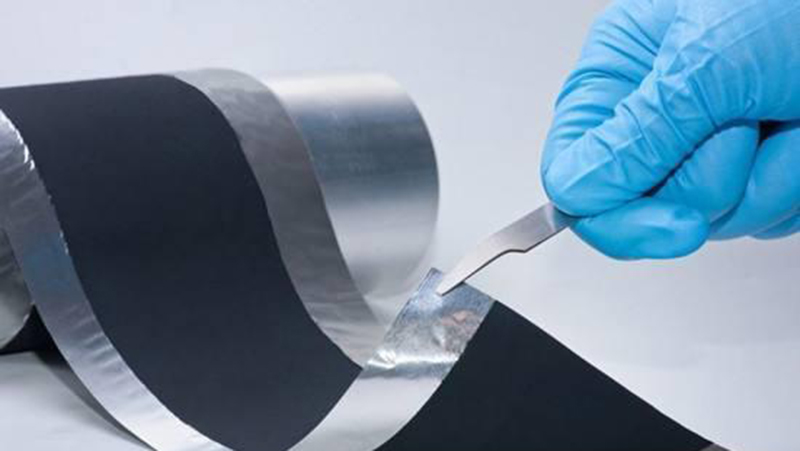Home > News
In the production process of lithium-ion batteries, the pole piece manufacturing belongs to the front-end process and occupies an important position in the whole process. The quality of the pole piece is related to the progress of the assembly process in the middle section of the lithium battery, and also affects the electrochemical performance of the rear section and the lithium battery.
The electrode sheet manufacturing is mainly composed of slurry preparation, current collector coating active material, electrode sheet rolling and electrode sheet cutting.
The uniformly dispersed lithium battery slurry is coated on the positive and negative current collector Aluminum Foil or copper foil through a slit extrusion type or pre-measured transfer coating head, and is dried in an oven in different temperature zones to remove excess in the slurry. Moisture or NMP solvent forms the initial lithium battery electrode sheet.
The coated electrode sheet has high initial porosity and low cohesion, which is not conducive to the infiltration of the electrolyte, the contact resistance between the active material particles is large, and the active material is easy to peel off the current collector during the use of the lithium battery.
It seriously affects the electrochemical performance of lithium batteries. Therefore, the pole piece after coating needs to go through a rolling process to improve its performance.
From coating to rolling, the electrode sheet has undergone a process from thick to thin and porosity from large to small. We expect the electrode sheet to have appropriate porosity and minimum interface contact resistance on the basis of not destroying the morphology of the positive and negative active material particles.

It means that on the basis of the above, the thinner the thickness of the pole piece is, the better. However, in actual production, it is sometimes found that the pole piece will be compressed after a few hours or after other processes.
The thickness of the electrode sheet increases compared with the thickness of the electrode sheet after rolling, which is the rebound of the electrode sheet.
The electrode sheet are in different stages, and the reasons for their thickness rebound (such as rolling rebound, drying rebound, charging and discharging rebound, etc.) are different, and the most fundamental reason is the unreasonable selection of compaction density.
Under normal circumstances, raw material suppliers will provide lithium battery companies with a range of maximum compaction density, which is based on the true density, material composition, hardness and other parameters of the material.
If the compaction density is too large or too small, it is incorrect. If the compaction density is too small, the porosity in the pole piece is high, the contact between the active material particles is not tight, and the internal resistance of the battery is large, which affects the electrochemical performance of the lithium battery;
If the compaction density is too large, the structure of the living material will be destroyed, there will not be enough gaps between the particles, and the internal repulsive force will be too large, and the thickness will rebound after rolling.
Contact: Lika
Phone: +86-19906035385
Tel: 0086-592-7161550
Email: sales@aotbattery.com
Add: No.168, Zhaogang Road, Xiamen City, China